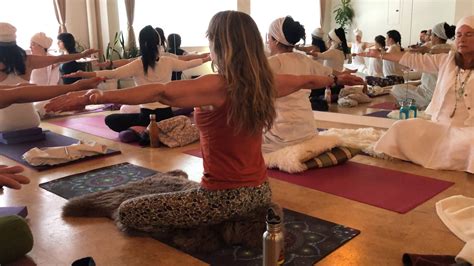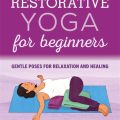Mastering Your First Kundalini Yoga Class: A Comprehensive Guide for Beginners
Kundalini Yoga is often described as the “yoga of awareness,” combining physical postures, breath control, and meditation to awaken spiritual energy. But what can you really expect from your first class? Whether you’re a complete novice or familiar with other yoga styles, stepping into a Kundalini Yoga class is likely to be an experience like no other. This guide will walk you through every aspect of what you need to know before attending your first class, so you can walk in feeling prepared, confident, and open to the transformative practice.
Key Concepts of Kundalini Yoga
Before diving into your first class, it’s essential to understand some of the core concepts that set Kundalini Yoga apart from other forms of yoga.
- Kundalini Energy: Often depicted as a coiled serpent at the base of the spine, Kundalini energy is believed to be a dormant spiritual power within all of us. Through the practice of Kundalini Yoga, this energy is awakened and channeled up through the chakras, promoting healing and spiritual growth.
- Chakras: The seven chakras are energy centers located along the spine. Each class is often designed to activate and balance these chakras, helping practitioners align their physical, emotional, and spiritual selves.
- Pranayama: Breathwork is a critical part of Kundalini Yoga. Controlled breathing techniques, known as pranayama, are used to increase lung capacity, enhance concentration, and support the flow of Kundalini energy.
- Mantras and Mudras: In Kundalini Yoga, specific mantras (sacred sounds) and mudras (hand gestures) are used to focus the mind and harness energy.
Historical Context of Kundalini Yoga
Kundalini Yoga has its roots in ancient India, but it was introduced to the Western world in the late 1960s by Yogi Bhajan. Historically, the teachings of Kundalini were considered sacred and passed down only to select initiates. However, Yogi Bhajan believed that these practices were meant for everyone, not just an elite few, and thus began teaching Kundalini Yoga publicly.
The practice blends elements of traditional yoga, Sikh teachings, and Tantric philosophy. While some critics argue that the Western adaptation has diluted the original spiritual focus, others believe it has made Kundalini more accessible to the modern practitioner. Understanding this history can help you appreciate the profound depth and significance of the practice.
Current State Analysis
Today, Kundalini Yoga has grown in popularity worldwide. Classes are offered in studios, online, and even as part of wellness retreats. However, its rise has not been without controversy. Some practitioners argue that modern Kundalini Yoga has become overly commercialized, losing some of its traditional spiritual roots in favor of fitness-oriented goals. Despite this, many people find immense benefit in the practice, whether for physical health, mental clarity, or spiritual awakening.
Practical Applications of Kundalini Yoga
The benefits of Kundalini Yoga extend beyond the mat and into everyday life. Here are some practical applications of the practice:
- Stress Relief: The combination of pranayama, meditation, and physical postures helps to release tension and promote relaxation, making Kundalini Yoga an effective stress-management tool.
- Improved Focus: The mental discipline required in Kundalini practice improves concentration, making it beneficial for students, professionals, and anyone who needs to focus on complex tasks.
- Emotional Balance: Kundalini’s emphasis on breathwork and meditation can help manage emotions and increase resilience to emotional stressors.
- Spiritual Growth: Many practitioners report feeling a deeper connection to their inner selves and the universe, leading to a greater sense of purpose and fulfillment.
Case Studies: Personal Journeys with Kundalini Yoga
Let’s explore a few real-life examples of individuals who have integrated Kundalini Yoga into their lives:
| Name | Initial Challenge | Kundalini Practice | Outcome |
|---|---|---|---|
| Emily, 28 | Struggled with anxiety and insomnia | Focused on pranayama and meditation techniques | Reported significant improvement in sleep quality and overall anxiety levels after two months |
| Raj, 45 | Seeking spiritual growth and clarity | Incorporated Kundalini into his daily morning routine | Felt more centered and connected to his spiritual self |
| Sarah, 34 | Dealing with chronic back pain | Attended Kundalini classes focused on posture and flexibility | Reported a significant reduction in pain and improved mobility after six weeks |
Stakeholder Analysis
The stakeholders involved in Kundalini Yoga range from individual practitioners to broader communities and institutions:
- Practitioners: Individuals seeking mental, physical, and spiritual benefits from the practice.
- Yoga Studios and Instructors: Teachers are responsible for guiding classes and introducing students to the practice in a safe, supportive environment.
- Healthcare Providers: In some cases, medical professionals recommend Kundalini Yoga as part of a holistic approach to health, particularly for stress management.
- Spiritual Communities: For many, Kundalini Yoga is part of a broader spiritual practice that extends into community involvement and charitable works.
Implementation Guidelines for Beginners
If you’re preparing for your first class, here are some essential tips to help you get started:
- Dress Comfortably: Wear loose, breathable clothing that allows for easy movement.
- Bring a Yoga Mat: Most studios provide mats, but it’s always a good idea to bring your own for hygiene and comfort.
- Come with an Open Mind: Kundalini Yoga can feel very different from other yoga styles, especially with the chanting and breathwork. Be open to the experience and resist the urge to compare it to other practices.
- Focus on Your Breath: If you feel overwhelmed, return to your breath. The breath is your most powerful tool in Kundalini Yoga.
Ethical Considerations in Kundalini Yoga
As with any spiritual practice, Kundalini Yoga raises important ethical questions:
- Cultural Appropriation: Some critics argue that the Western adaptation of Kundalini Yoga can strip the practice of its cultural and spiritual roots. Practitioners should approach the practice with respect and understanding of its origins.
- Commercialization: The rise of Kundalini Yoga as a commercial venture has led to concerns about authenticity and the dilution of its spiritual elements. It’s essential for practitioners and instructors to maintain the integrity of the practice.
- Teacher Accountability: Given the powerful nature of the practice, instructors must uphold high ethical standards to ensure students’ physical and emotional safety.
Limitations and Future Research
While Kundalini Yoga offers many benefits, there are also limitations that should be addressed through future research and practice:
- Scientific Validation: While anecdotal evidence suggests numerous benefits, more rigorous scientific studies are needed to validate the effects of Kundalini Yoga, particularly on mental health and emotional well-being.
- Accessibility: Kundalini Yoga’s emphasis on spiritual awakening can be intimidating for beginners, and more accessible entry points should be developed to welcome a broader range of students.
- Health Risks: Although generally safe, Kundalini Yoga may pose risks to individuals with certain medical conditions, such as hypertension or back issues. More research is needed to identify potential contraindications.
Expert Commentary
Experts in the field of yoga and wellness have varying opinions on Kundalini Yoga’s role in modern health practices. Some praise its holistic approach to healing and self-awareness, while others criticize its more esoteric elements as being out of step with the needs of today’s yoga practitioners.
Ultimately, Kundalini Yoga offers something unique to each practitioner. Whether you’re seeking spiritual growth, emotional balance, or simply a new way to move your body, it’s a practice that adapts to meet your needs. Like any powerful tool, it requires thoughtful use, respect for its origins, and a commitment to personal growth.








